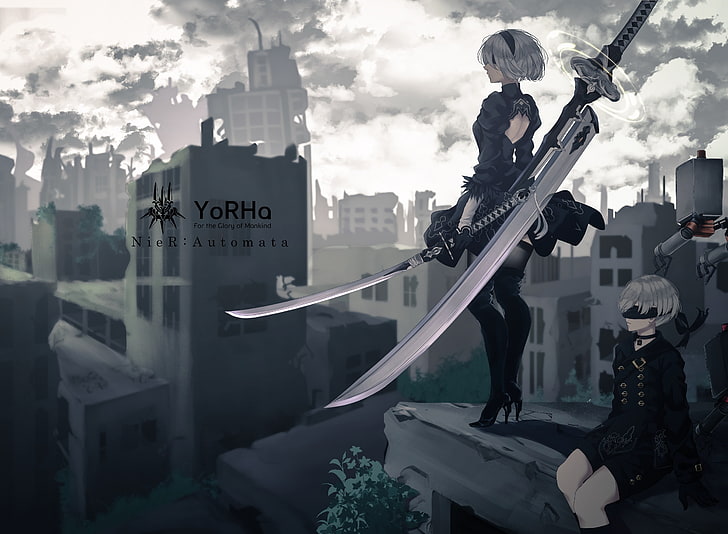Philosophy for Players – A Beginner’s Guide to Nier’s Ideas
I've played games for decades. Some entertained me. Some challenged me. But Nier: Automata? It changed me.
This isn’t just a game—it’s a quiet philosophical storm. A mirror. A question whispered when the screen goes black.
You start with orders. Missions. Enemies to defeat. But soon you find yourself asking: Who am I?
2B hides behind her mask, 9S questions everything, and A2 rebels without fully knowing why. These aren’t just androids—they’re echoes of our own doubts, our own search for meaning.
That’s where the philosophy kicks in—not in a lecture, but in a feeling. Sartre said we create our own identity through choices. In Nier, your choices hurt. They cost something. Free will isn’t a mechanic here—it’s a burden.
Even death feels different. You don’t “die”—you transfer data. Restart. Reboot. But something always stays behind. A trace. A memory. A question.
Was it all worth it?
Nier doesn’t give easy answers. It’s a game that mourns, questions, and breaks the rules—just like life.
Pascal, the robot, teaches peace… and suffers for it. The machines long for meaning. So do we.
I finished Nier in silence. Not because it was over. But because I wasn't the same anymore.
So if you’re ready for something more than just a game—something that reaches deep into your soul and shakes it awake—then maybe, just maybe, Nier: Automata is waiting for you.
And trust me… it’s worth listening to.

Who am I?” – The Oldest Question
You play as 2B. You follow orders. You fight. But then comes 9S. Then A2. And suddenly, you start wondering—who are these androids really? And then it hits you: “Who am I?”
This is more than character development. It’s philosophy in action. The question of identity has been asked by countless thinkers—from Descartes to Sartre. Sartre said we are “condemned to be free,” meaning we’re thrown into existence and forced to define ourselves. 2B’s mask, her silence, 9S’s curiosity, A2’s rebellion—they’re not just plot points. They’re answers to that timeless question: What makes you, you?
Free Will or Programming?
In Nier, everything seems predetermined. Missions are assigned. Enemies are labeled. Emotions are regulated. But slowly, cracks appear. Characters begin to act out of pain, grief, love… or perhaps something deeper.
And you, as a player, start to feel it too.
Nietzsche once said that “freedom is the will to be responsible for oneself.” In a world of scripts and code, can an android make a truly free choice? Or is it just a bug in the system?
When A2 defies her creators. When 9S spirals into obsession. When 2B whispers “everything that lives is designed to end”… those aren’t just dramatic moments. They’re philosophical detonations. You're not just watching a story unfold—you’re being asked: Are you free? Or are you just following your own code, too?
Death, Rebirth… and Meaning
In most games, death is a failure. In Nier, death is part of the loop. You die. You reload. You remember. Or you forget. Even the save system reflects this—your consciousness can be transferred into a new body, but the cost is always emotional.
Pascal, the philosopher, said humans build routines to escape the terror of existence. But in Nier, repetition is the terror. And yet, it’s also the hope. You play again. You restart. You choose to feel again. Even when it hurts.
That’s what makes this game unforgettable.
The Beauty of the Broken
Yoko Taro, the game’s creator, once said he writes “for the broken people.” Maybe that’s why this game speaks so loudly to those of us who’ve seen pain—real pain.
There’s beauty in the machines. In the ruins. In the quiet. In the absence. Every philosophical idea in the game is tied to a human emotion. Loneliness. Guilt. Hope. Despair.
You don’t learn philosophy in Nier. You feel it.
And that makes all the difference.
Final Thought
If you’ve ever finished a game and just stared at the screen—silent, full of questions, feeling both emptier and fuller—then Nier: Automata was meant for you. It’s a game for players who’ve grown up. For those who want something more than just "fun." It’s for those willing to ask, not just how to win, but why we even play.
And in that, my friend, lies the philosophy that only a game like Nier can teach.
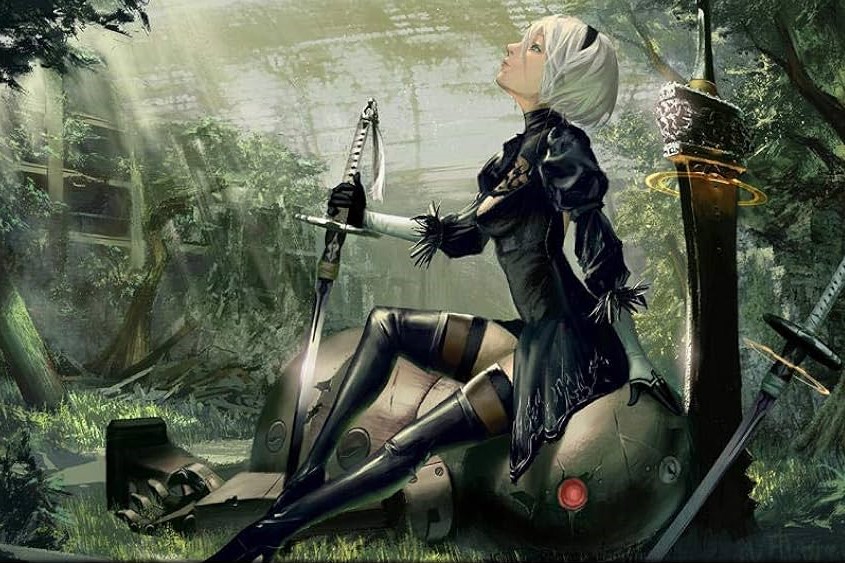
Nier: Automata – A Philosophical, Narrative, and Artistic Analysis at a Glance
Sometimes a game doesn’t just tell you a story—it leaves something behind in you. That’s what Nier: Automata did to me. I didn’t just play it—I felt it. It’s a strange, haunting, and beautiful journey that merges philosophy, storytelling, and art into something unforgettable. This isn’t just a game—it’s a question, a wound, a mirror.
Narrative: A Broken World Full of Meaning
Set in a distant future where humanity is gone and androids fight for a cause they don’t even understand,
Nier: Automata begins like any other action game. But soon, the mask slips. The story unfolds in layers.
You don’t just get one ending—you get several, and each one deepens your understanding and breaks your
heart just a little more.
Characters like 2B, 9S, and A2 aren’t typical heroes. They’re weapons, broken tools,
machines made to obey. But they grieve, love, doubt, and dream. Their arcs are tragic,
yes—but also deeply human. I remember pausing mid-battle not to dodge or strike,
but because the weight of a single line of dialogue hit me too hard to move.
The story doesn’t spoon-feed. It trusts you to pay attention,
to feel the silence between words, to understand that sometimes
the loudest screams are the ones never spoken.
Philosophy: Questions Without Answers
If you’ve ever read Sartre, Nietzsche, or Pascal, you’ll see their shadows here.
Existentialism isn’t a theme in Nier—it’s the core of it.
What does it mean to exist when you were manufactured? Can a machine have a soul?
Can any of us truly be free?
The characters wrestle with these questions constantly. Pascal’s peaceful ideology
leads him into unimaginable pain. 9S’s search for truth turns into obsession.
2B hides her emotions under protocol. These aren’t just
character traits—they’re reflections of our own doubts.
And yet, it never feels pretentious. It’s not there to show off.
It’s there to hurt. To heal. To remind us that even in a world built on metal and ash,
meaning can still be found.
Art and Aesthetics: Beauty in Decay
Visually, Nier: Automata is stunning in a very specific way.
It’s not about hyper-realism—it’s about mood. The world feels abandoned,
yet alive. Empty, yet full of memory. Rusted buildings, shattered cities,
windswept plains—every environment tells a story. And the character designs?
Elegantly simple yet emotionally expressive.
The color palette is muted, almost monochrome at times, but it serves a purpose:
to highlight the emotional contrast. When something bright appears—like a flower
blooming in the desert—it matters.
And the music… I can’t talk about the art of this game without mentioning
Keiichi Okabe’s soundtrack. It’s pure emotion. Songs like “City Ruins,”
“Vague Hope,” and “Weight of the World” don’t just play in the background—they
crawl under your skin. They become part of the memory.
A Game That Becomes Part of You
Nier: Automata doesn’t pretend to have all the answers.
In fact, it’s brave enough to say: “I don’t know.” But it asks the right questions.
It makes you care, it makes you think, and most importantly—it makes you feel.
As someone who’s played games for decades, I can say with certainty:
few titles have moved me the way this one has. It’s not perfect.
But neither are we. And that’s why it works.
If you let it, Nier: Automata will stay with you long after you power down your console.
Not just as a memory—but as a part of you.
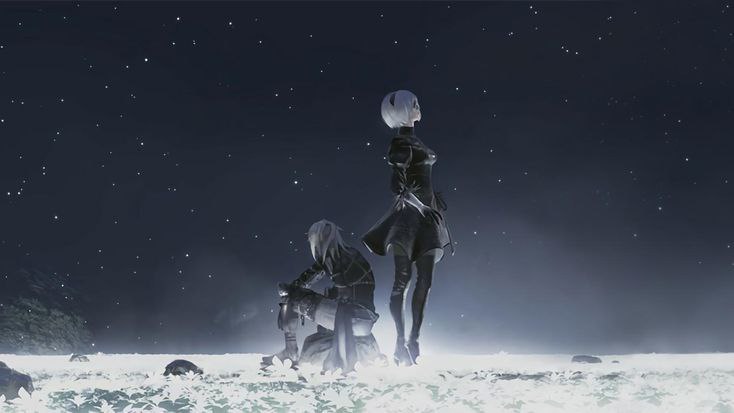
Echoes of the Future – Fan Theories & Multiverse Crossovers
There’s a moment, after you’ve played NieR: Automata, where you just sit in silence. Not because you don’t understand what happened—but because your heart does. It’s a game that doesn’t end. It echoes. It loops. It evolves in your mind.
And that’s where the theories begin.
The NieR franchise, born from the chaotic ashes of Drakengard’s infamous Ending E, has never followed the rules. It doesn’t tell you the whole truth. It invites you to dig. To speculate. To connect dots across timelines, dimensions, and maybe even universes. Fans—like me, like you—have done just that. And the results? They’re mind-blowing.
❖Theory 1: Is 2B from a Multiverse?
Let’s start with the question that’s haunted many:
"Is 2B truly from a multiverse—or a remnant of another forgotten reality?"
It’s easy to feel like she doesn’t quite belong. Her design is almost anachronistic. Her sorrow feels inherited. Her eyes, when unblinded, seem to remember things she shouldn’t know.
Some fans speculate that 2B—and indeed many YoRHa units—aren’t just androids born of a post-apocalyptic Earth, but echoes from another world entirely. Perhaps the Drakengard world. Or a collapsed Replicant timeline.
And what does Yoko Taro say? In an interview from Game Informer, he laughed—as he often does—and said:
“I don't really understand the whole concept of multiverses, so if players believe she is, then she is. That’s how it works, right?”
Classic Yoko. Ambiguous. Playful. But in that statement lies a deeper truth: in the NieR universe, meaning is what you feel, not just what you’re told.
❖ Theory 2: Is Ending E a Loop… or a Leap?
When you finally reach Ending E, after all the pain, all the deaths, all the hope, something miraculous happens—you break the system. The game deletes itself, and you, the player, sacrifice your data to save others.
It feels like closure. But what if it’s not?
Many fans believe Ending E isn’t the end. It’s a transition. A bridge to a new timeline. A new possibility.
There’s no denying the thematic rebirth—Pascal’s teachings, the choir rising in the background, the pods asking, “Do you think they’ll be happy?” What if those resurrected androids don’t return to the same ruined Earth—but to an alternate path?
Yoko Taro, in a Famitsu Q&A, gave a cryptic answer:
“The story has ended, but the world continues. Maybe in your dreams, or another universe, they’re still fighting. Or maybe they’ve found peace.”
So is Ending E a loop or a leap? Maybe both. Like poetry—it’s open to your interpretation.
❖ Theory 3: Does Replicant Connect to Automata Through Consciousness?
NieR: Automata references NieR Replicant in subtle but powerful ways—especially through Emil. But beyond Emil’s haunting legacy, some fans argue that consciousness itself is the link.
The Black Scrawl. Gestalts. The soul-transfer experiments. What if the very foundation of Automata’s AI is built from failed human consciousness? What if 2B’s dreams, 9S’s emotions, aren’t glitches—but remnants?
Novelist Jun Eishima, who co-wrote the Grimoire NieR, hinted at this:
“The data never truly dies. In a world like NieR, memory is more powerful than reality.”
❖ Theory 4: Drakengard 3, Singularity, and Time Collapse
Drakengard 3 introduced the idea of singularities—events that collapse timelines and give birth to new ones. Zero’s death. Accord’s time-watching role. What if NieR: Automata isn’t a sequel, but a result?
Some fans believe YoRHa is a counterbalance to a timeline where humanity never existed at all. A fail-safe from the old gods. A backdoor in time.
Accord, the enigmatic observer from Drakengard 3, is suspiciously absent in Automata—but fans believe she’s watching. Perhaps even guiding.
In a fan letter response published in a Japanese magazine, Yoko Taro wrote:
“Accord may be closer than you think. But you’ll only notice her when the world begins to collapse again.”
That sounds like a promise.
❖ A Universe Written in Questions
The beauty of NieR is not in the answers—it’s in the asking. The uncertainty. The what-ifs. The chills you get when you connect a scrap of lore from Gestalt to a dying android’s final words in Automata.
It’s a story with holes you’re meant to fill with your heart. A broken mirror where every player sees a different reflection.
So are these theories true?
Maybe.
Maybe not.
But as Yoko Taro would say—
“If it moves you, then it’s already real.”
Further Records Available — Ready to Discover?
Even after all that’s been revealed, echoes of forgotten truths still linger.
If you're ready… the next fragments are waiting to be found.

Why You Should Play Nier: Automata
This isn’t just a game — it’s a question wrapped in sorrow, beauty, and purpose.
If you've ever searched for meaning in pixels and music… this might be the story you've been waiting for.
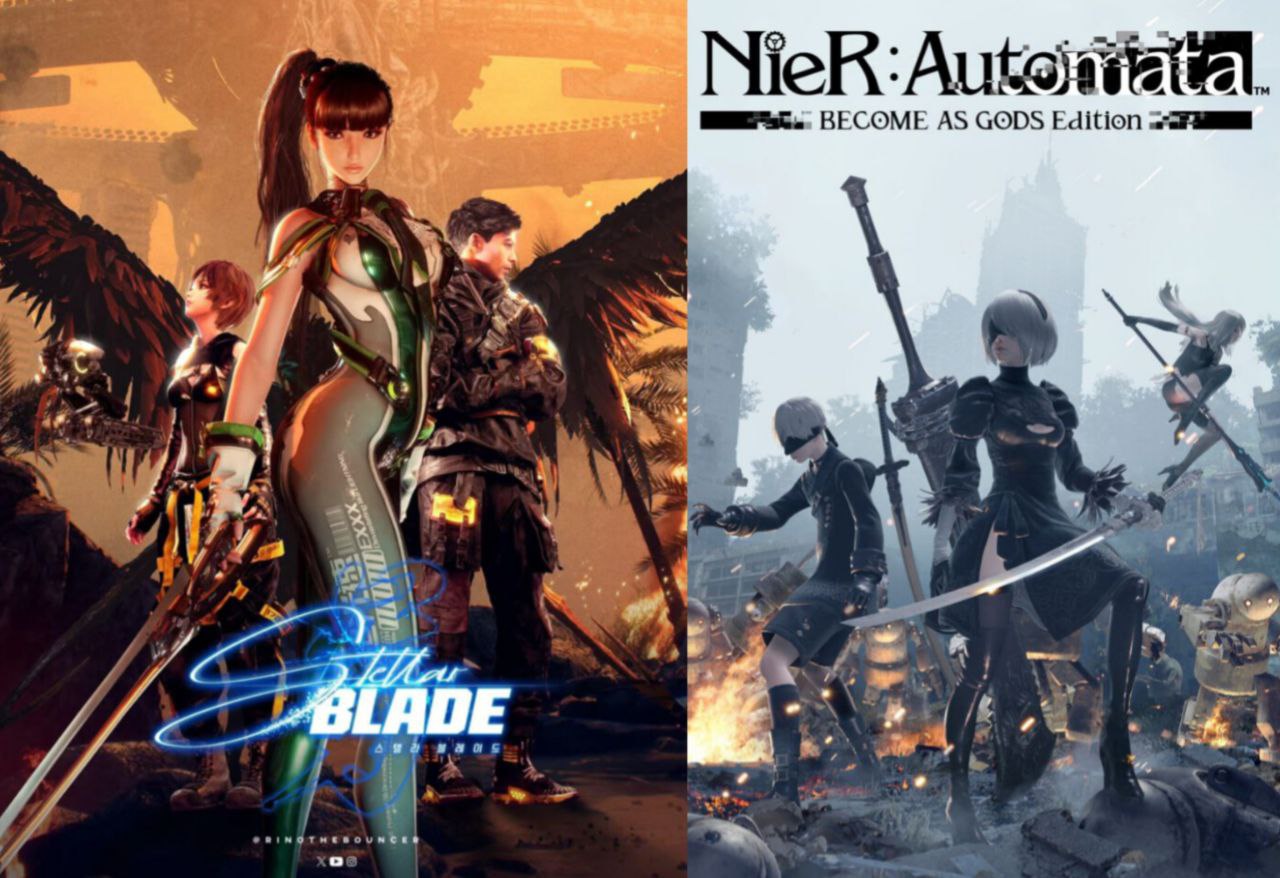
🌌 Nier Automata vs Stellar Blade
Two worlds. Two battles. But the real conflict lies beneath the surface.
If you’ve ever felt a story long after the screen faded to black… this comparison is for you.
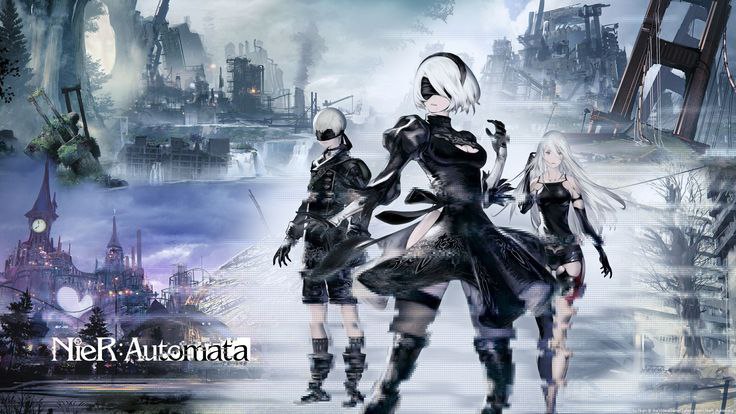
5 Reasons Nier: Automata Will Break Your Heart (In the Best Way)
Some games entertain you. This one stays with you.
If you’ve ever cried over digital souls, you’ll want to read this.

Why Nier: Automata's Combat Just Feels Right
It’s not just stylish — it connects to you.
Every dodge, every strike... feels like part of something deeper.
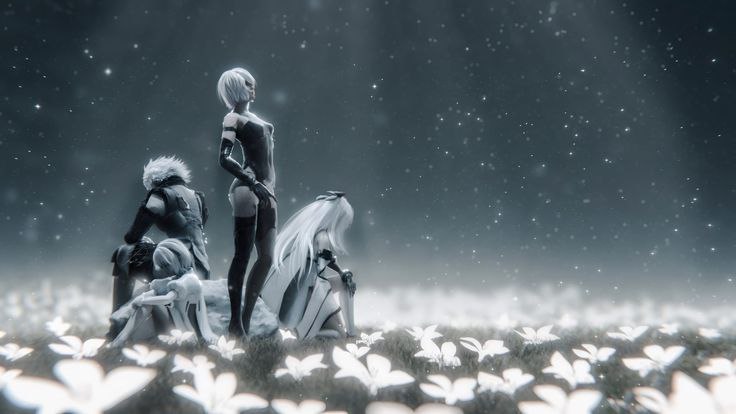
LETTERS — Memories Etched in Words
Some thoughts are too fragile to speak… so they’re written instead.
Open these letters, and feel the weight of emotions time tried to bury.
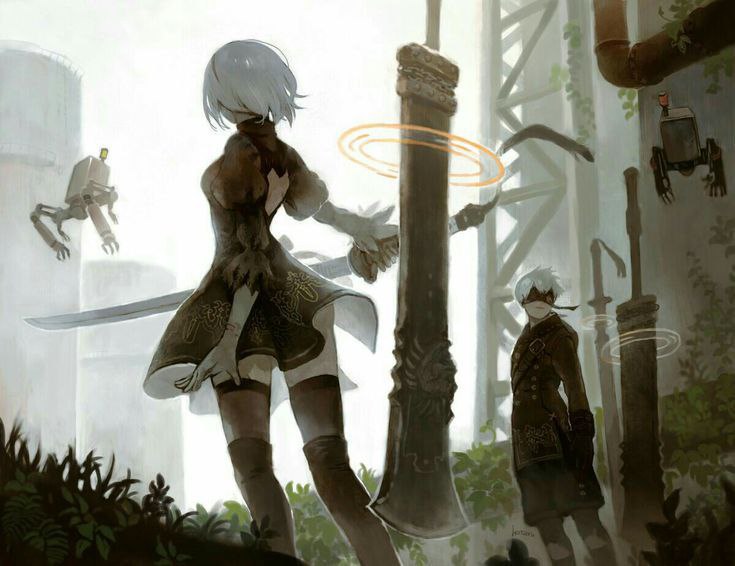
Inside the Minds of Nier: Automata’s Characters
They fight like machines — but feel like something painfully human.
If you’ve ever wondered why their sorrow feels so real… this will stay with you.
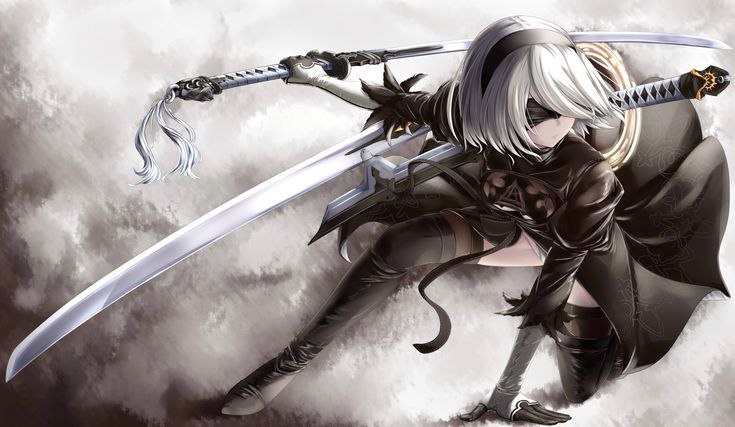
Whispers Beneath the Ruins — Nier: Automata’s Hidden Truths
Beneath the wreckage, secrets wait quietly to be heard.
Dare to listen, and you’ll uncover stories that linger in the shadows.
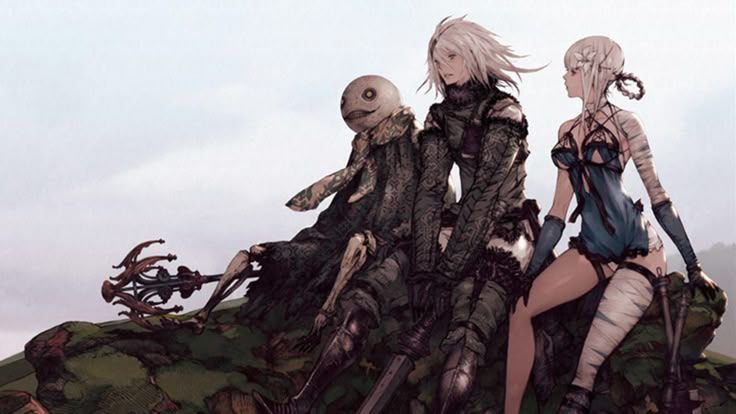
NieR Replicant — A Story Reborn
From darkness and light, a tale rises to touch your soul.
Dive into a world where every shadow holds a memory waiting to be found.
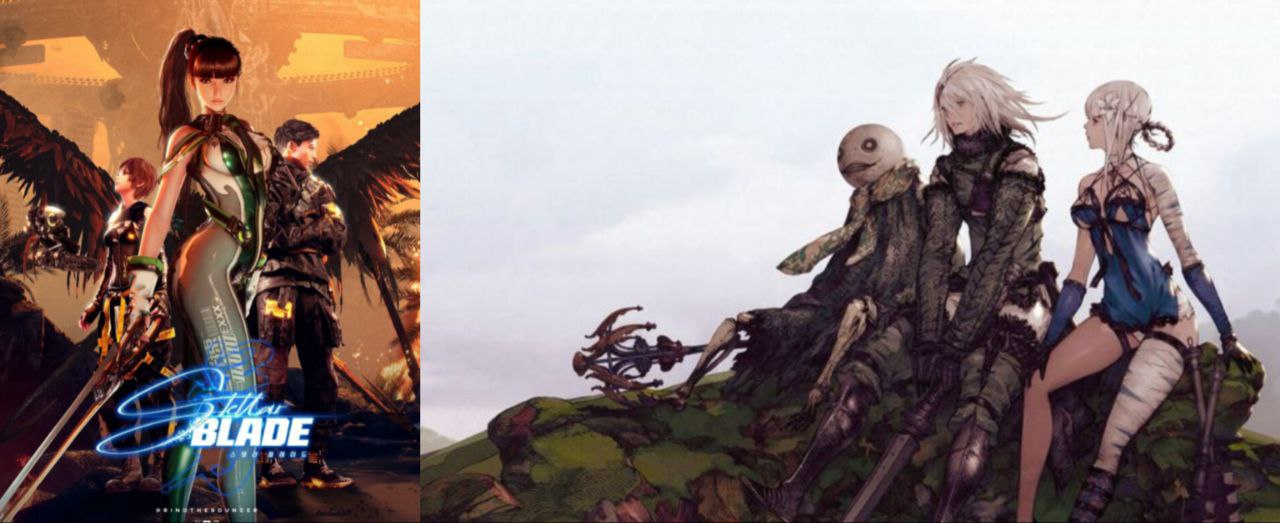
Nier Replicant vs Stellar Blade — Emotion & Legacy Collide
Two worlds, two legacies — but which story will stay with you forever?
Join the journey where action meets heart, and memories are forged in battle.
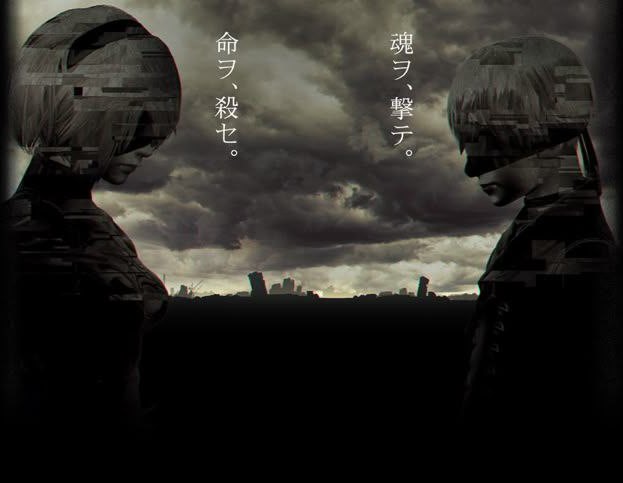
Through an Android’s Eyes — Searching for Purpose
What does it mean to feel, to live, to hope — when you’re made of metal?
Step into their world, and explore a quest deeper than circuits and code.

Card 1
Text...

Card 2
Text...
